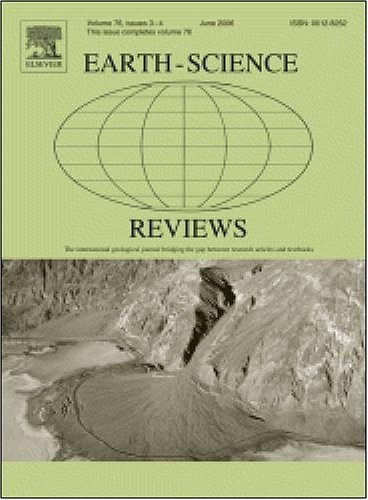轻烃在石油地球化学中的应用综述
IF 10
1区 地球科学
Q1 GEOSCIENCES, MULTIDISCIPLINARY
引用次数: 0
摘要
轻烃是石油的重要组成部分,含有丰富的地球化学信息。本文对近50年来轻烃的研究进行了全面的总结和评述。评价了与世界各地盆地石油中轻烃有关的各种参数和图表的适用性和可靠性。轻烃的化学组成和稳定同位素值对识别烃源岩的来源、成因、沉积环境和烃源岩成熟度具有重要意义。除了热化学硫酸盐还原外,轻烃参数还被广泛用于识别次生蚀变过程,包括蒸发分馏、水洗、生物降解和石油裂解。轻烃参数对天然气运移的示踪比对石油运移的示踪更有效。利用现有的轻烃参数准确识别混合成因或叠加次生效应的石油贡献仍然具有挑战性。这些挑战可以通过使用先进的分析技术来解决,例如特定位置同位素和团块同位素分析与其他尖端技术相结合。分离技术、高分辨率质谱分析和同位素分析的进步大大提高了轻烃化学和同位素组成分析的准确性,使人们对轻烃在微观尺度上的形成和转化有了更深入的了解。本文章由计算机程序翻译,如有差异,请以英文原文为准。
Applications of light hydrocarbons in petroleum geochemistry:A review
Light hydrocarbons are key components of petroleum and contain a wealth of geochemical information. This review provides a comprehensive summary and comments on the research that has been carried out on light hydrocarbons over the past 50 years. It evaluates the applicability and reliability of the various parameters and diagrams that relate to the light hydrocarbons in petroleum from basins worldwide. The chemical compositions and stable isotope values of light hydrocarbons are valuable for identifying the sources and origins of hydrocarbons, their depositional environments, and the maturity of their corresponding source rocks. In addition to thermochemical sulfate reduction, light hydrocarbon parameters are widely used to identify secondary alteration processes, including evaporative fractionation, water washing, biodegradation, and oil cracking. Light hydrocarbon parameters are more effective for tracing natural gas migration than they are for tracing oil migration. Using current light hydrocarbon parameters to accurately identify contributions of petroleum with mixed origins or overlapping secondary effects remains challenging. These challenges may be addressed by using advanced analytical techniques, such as position-specific isotope and clumped isotope analyses combined with other cutting-edge technologies. Advances in separation techniques, high-resolution mass spectrometry, and isotope analysis have significantly enhanced the accuracy of analyzing the chemical and isotopic compositions of light hydrocarbons, providing a deeper understanding of their formation and transformation at microscales.
求助全文
通过发布文献求助,成功后即可免费获取论文全文。
去求助
来源期刊

Earth-Science Reviews
地学-地球科学综合
CiteScore
21.70
自引率
5.80%
发文量
294
审稿时长
15.1 weeks
期刊介绍:
Covering a much wider field than the usual specialist journals, Earth Science Reviews publishes review articles dealing with all aspects of Earth Sciences, and is an important vehicle for allowing readers to see their particular interest related to the Earth Sciences as a whole.
 求助内容:
求助内容: 应助结果提醒方式:
应助结果提醒方式:


